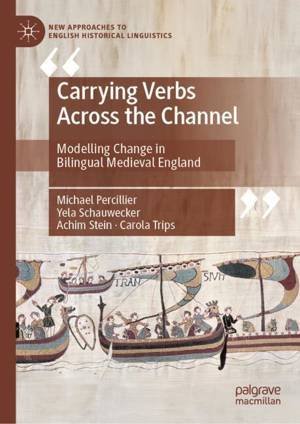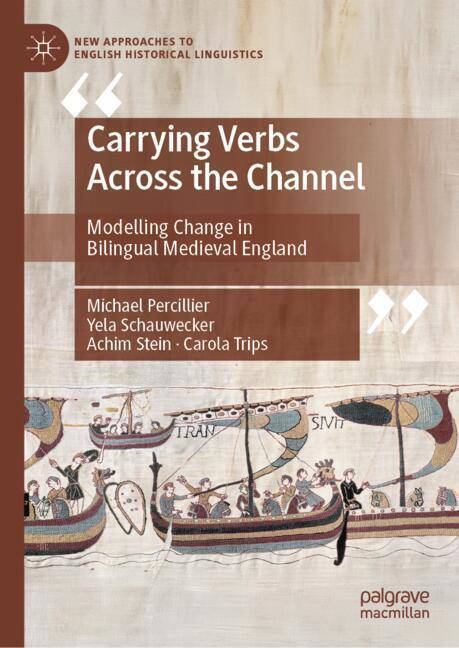
- Afhalen na 1 uur in een winkel met voorraad
- Gratis thuislevering in België vanaf € 30
- Ruim aanbod met 7 miljoen producten
- Afhalen na 1 uur in een winkel met voorraad
- Gratis thuislevering in België vanaf € 30
- Ruim aanbod met 7 miljoen producten
Carrying Verbs Across the Channel
Modelling Change in Bilingual Medieval England
Michael Percillier, Yela Schauwecker, Achim Stein, Carola TripsOmschrijving
This book examines grammatical changes that took place in the medieval language contact situation between English and French from 1066 until 1500. It investigates structural copying phenomena and their connection with the lexicon, finding that copying of lexical verbs with a predicate-argument structure accelerated wider grammatical changes, and shows why the traditional notion of borrowing should be replaced with the more adequate concept of copying. The authors start by taking a fresh look at the relationship between Old French and Middle English in light of recent developments in the fi eld of linguistics, arguing that what has traditionally been seen as a diglossic situation (i.e., as contact between the dominating speakers of French and the native speakers of English) should instead be analysed through the framework of bilingualism. The two contact scenarios under scrutiny are the ones between Old French and Middle English and Middle English and the contact variety of Anglo-French. On the basis of their case studies they develop a holistic model of contact-induced change that integrates the bilingual individual as well as the speech community and its sociolinguistic background. This book will be of interest to students and scholars of language history and change, language contact and acquisition, sociolinguistics, multilingualism, and psycholinguistics.
Specificaties
Betrokkenen
- Auteur(s):
- Uitgeverij:
Inhoud
- Aantal bladzijden:
- 305
- Taal:
- Engels
- Reeks:
Eigenschappen
- Productcode (EAN):
- 9783031508059
- Verschijningsdatum:
- 13/11/2024
- Uitvoering:
- Hardcover
- Formaat:
- Genaaid
- Afmetingen:
- 148 mm x 210 mm
- Gewicht:
- 544 g

Alleen bij Standaard Boekhandel
Beoordelingen
We publiceren alleen reviews die voldoen aan de voorwaarden voor reviews. Bekijk onze voorwaarden voor reviews.











